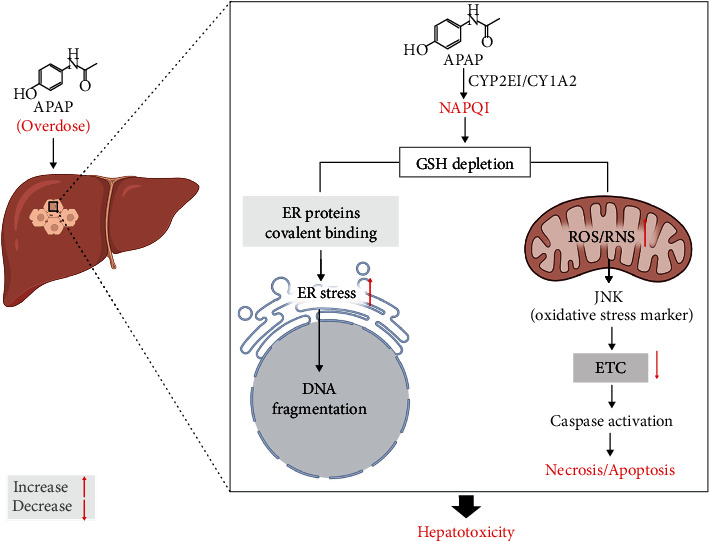Figure 1.

The mechanisms showing the implication of oxidative stress in the pathophysiology of paracetamol (acetaminophen) liver injury. Briefly, as a consequence of paracetamol overdose, remaining nontherapeutic doses of paracetamol become metabolized by membrane-bound enzymes such as CYP2E1 and CYP1A2 to its reactive intermediate toxic metabolite, NAPQI. The generated NAPQI forms mitochondrial protein adducts which in turn are implicated to play a major role in driving oxidative stress-induced hepatoxicity through rapid conjugation with GSH and subsequently initiating signaling cascades resulting in programmed cell death. Abbreviations: CYP2E1: cytochrome P450 2E1; CYP1A2: cytochrome P450 1A2; NAPQI: N-acetyl-p-benzo-quinone imine; GSH: reduced glutathione; ROS: reactive oxygen species; RNS: reactive nitrogen species; JNK: c-Jun N-terminal kinase; ETC: electron transport chain.
